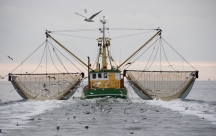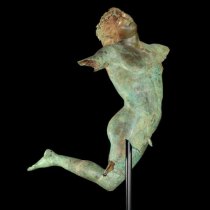 A new report published by Wreck Watch Int. has identified fishing trawling as the most aggressive threat to the world’s shipwrecks and sunken heritage. This first worldwide study into the effects of fishing on marine archaeology, based on 68 examples and case studies, has revealed a pan-oceanic trail of cultural destruction that spans the globe from England to the Mediterranean, Florida and the Far East.
A new report published by Wreck Watch Int. has identified fishing trawling as the most aggressive threat to the world’s shipwrecks and sunken heritage. This first worldwide study into the effects of fishing on marine archaeology, based on 68 examples and case studies, has revealed a pan-oceanic trail of cultural destruction that spans the globe from England to the Mediterranean, Florida and the Far East.
Bottom fishing is one of the most widespread sources of man-made disturbance to seabeds. Each year trawlers sweep an area of seabed equivalent in size to half the world’s continental shelves. For these reasons marine ecologists term trawlers ‘bulldozers of the deep’.
Underwater cultural heritage has been turning up in fishermen’s nets since 1755, when two to three dozen Roman bowls were snagged each year in oyster dredges off Herne Bay. Since then everything imaginable has been hauled up from the deep from a Neolithic dugout canoe off Bulgaria to 18th-century elephant tusks off Brittany, and more than 600 Bronze Age to Crusader amphoras from Turkey and Israel. Timbers as large as a 4.05 metre-long keelson and mast step have been ripped up from a ship lost in Denmark’s Wadden Sea in 1264, while shrimpers working in Florida, Louisiana and Texas have cut through 16th to 18th-century Spanish galleons. Further afield, pottery and timbers have been lifted en masse from Chinese junks and a Portuguese merchant vessel off peninsular Malaysia.
Chance catches include spectacular finds of museum quality, such as a shower of silver that rained down on the heads of shrimp trawlers working 80 kilometres off Louisiana after they snagged 12,000 coins from the Spanish warship El Cazador. A 4th-century BC ‘Dancing Satyr’ bronze statue masterpiece has been netted from a depth of 500 metres off Sicily, while the J. Paul Getty Museum in Malibu paid $3.95 million for a life-size bronze statue of a Victorious Youth, crafted between 300 and 100 BC, after it turned up in an Italian trawl net in the northern Adriatic Sea.

The Dancing Satyr, a 4th-century BC bronze statue snagged in a trawler’s net from 500 metres off Sicily.
Whereas marine ecologists have hotly debated ways to protect seabeds from trawling for over four decades, archaeology has failed to confront the problem: an out of sight and out of mind mentality has prevailed as a default position. In the 21st century marine archaeology finds itself rooted where terrestrial archaeology stood in 1882 after Colonel Lane-Fox’s concerns over plough damage to Iron Age Dyke Hills in Dorchester resulted in the creation of Britain’s first Ancient Monuments Act.
Wreck Watch Int. argues that exactly like ploughing on land the submerged resource and hopes of investigating well-preserved sites are ever diminishing through trawlers, scallop and fishing dredges pounding the deep. Over-exploited fish populations and marine habitats have the potential to regenerate over time, but underwater cultural heritage is more vulnerable. Once a shipwreck has been struck the damage is permanent. In the space of a few generations, some seas have witnessed the mass wiping of their ancient hard-drives, leaving behind a legacy to future generations of archaeological amnesia.
The Wreck Watch Int. report calls for brave decisions to be made to save and protect a small sample of the world’s most important sunken history by a combination of proactive measures – trawler finds amnesties, marine reserves, industry ‘taxation’, and full excavation to remove sites at risk from harm’s way.
Out of Sight, Out of Mind? Fishing and Shipwrecked Heritage by Dr. Sean Kingsley is available from Wreck Watch International, London: FishingHeritage-Kingsley. Its results are summarized in a Special Report published in the latest issue of Current World Archaeology.
